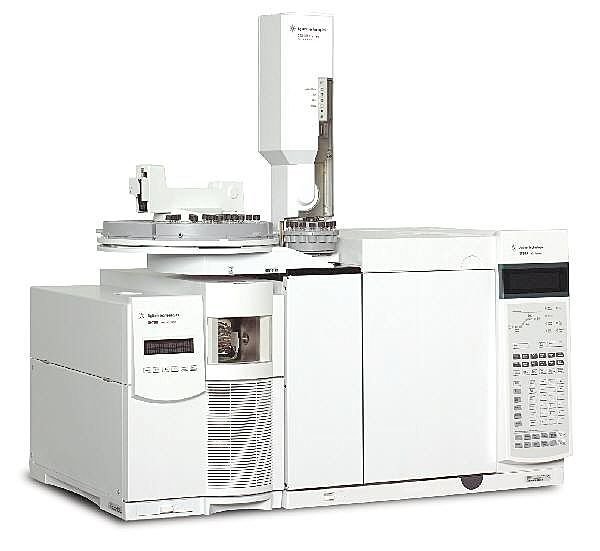Throughout this series of posts we have examined the Thorton-Nakumura protocol that is used throughout the United States for the prosecution of illegal possession marijuana. A fair examination of the question reveals that there is no validity to the notion that the 3 test regimen produces a valid conclusion that the unknown examined in fact contains THC.
Here are those series of posts:
- What is the goal and the purpose of testing of unknowns generally? How do we best design a test for marijuana?
- How is most marijuana testing conducted in the United States?
- What is microscopic morphological examination? Is it a “good” test?
- What is the modified Duquenois-Levine test? Is it a “good” test?
- What is Thin Layer Chromatography? Is it a “good” test?
- Is the combination of all three tests create a “good” testing scheme?
- Is there a better way to test for marijuana?
There is a better way: Modern Instrumentation
There is an instrument driven way that is very specific and produces verifiable data. This instrument driven technique has been validated and if use in the validated manner with a properly trained operator utilizing proper sample collection, proper sample selection, proper sample preparation, perfect instrumentation, and legitimate interpretation of the data will arrive at a valid result. This modern day instrumentation is called the Gas Chromatography with Mass Spectrometer (GC-MS).

When the laboratory analyst is proficiency tested on unknowns and then graded to see whether or not they can conduct a proper analysis of an unknown, the analyst uses GC-MS. When the laboratory wants to check that the known that they have purchased from a third party vendor that is used and needed in Thin Layer Chromatography (TLC) to compare against the unknown, the laboratory requires that it be verified by GC-MS.
So when the laboratory really wants to know or really needs to know whether or not something contains delta 9 THC, it uses the most specific device available that produces verifiable data. The verifiable data are the printouts that result from the analysis. This is called a Total Ion Current (TIC) chromatogram and the resulting spectrum that is compared against an adjudicated known that is produced by the National Institutes of Standards and Technology (NIST).
Here are other blog posts on the GC-MS process:
- Introduction-The different configurations and the Electron Impact process
- What types of mass analyzers are there?
- What type of detectors are there?
- What types of analysis can be done?
- How do you read the output?
- How do they come to a qualitative measure using software?
- How do they quantitate the results?
- Do you need chromatography if you are using Mass Spectrometry?
- Other topics of interest about GC-MS
In the analysis of unknowns that are seized, the process of derivatization can be used to volatilize the sample for introduction the the GC-MS. For example, the analyst can use MTBSTFA (N-methyl-N-(tert-butyldimethylsilyl)-trifluoroacetamide) or BSTFA/TMCS N,O-bis (trimethylsilyl) trifluoroacetamide/ Trimethylchlorosilane or MSTFA: N-methyl-N-trimethylsilyltrifluoroacetamide to derivative the unknown.
A popular technique includes:
A sample preparation that includes 500 mg of dry and homogenized herbal cannabis are extracted with 5 ml methanol : chloroform (9:1 v/v) by the following procedure: 10 seconds on a vortex, 15 min. ultrasonic bath including again vortexing after 5, 10 and 15 minutes, then centrifugation. The sample then needs to go through decarboxylation. A 200 μl of the above extract are transferred into a derivatization vessel. The solvent is evaporated under nitrogen gas to dryness. The sample is decarboxylated for 15 minutes at 210°C. The residue is dissolved in 200 μl methanol : chloroform (9:1 v/v). The preparation of the final solution next involves taking the above decarboxylation solution and diluting it with methanol by a factor of 100 (in two steps, each 100 μl + 900 μl) and is then used for the analysis.
Also, THC is very much amenable to Headspace Solid Phase Microextraction (HS-SPME). It is a non-derivatization-based technique where there is a extraction from the solid dose itself. It is a more direct measure as one is not chemically changing the sample. Different types of filters and fibers can be used such as polydimethylsiloxane 100 μm.
GC based testing for THC has been discussed in the scientific literature since 1971. In 1991 the UNDCP study discussed both GC-based methods and HPLC methods to identify THC.
Other foreign governments require much more testing than we do here in the United States. For example, Canada requires four tests including two instrument-based analysis that produce verifiable information such as a spectrum.
There is a better way, but it is not used. This certainly cannot be fair and just. It is time that we as citizens demand proof in the courtroom and end the myth of specific identification of marijuana in criminal courtrooms.
The way to close this series is by an apt observation made by Dr. Frederic Whitehurst, PhD JD who wrote:
Many a defense attorney has looked in amazement at the courtroom “identification” of Cannabis Sativa L. by a law enforcement officer sporting a gilded pot metal badge and a high school diploma who has written a report that would turn a ninth grade English teacher’s hair gray and deny that same officer a high school diploma. Obviously the awarding of a Basic Law Enforcement Training (BLET) diploma elevates such high school graduates to the doctoral level in botany, enabling them to conduct a visual leaf architectural analysis and the court accepted alchemy of the Duquenois Levine test to reach a conclusion that the green vegetable material in that little baggy can be identified as marijuana to the exclusion of all other plant material.



One response to “The myth of specific identification of Marijuana in criminal court Part 7: Is there a better way to test for marijuana?”